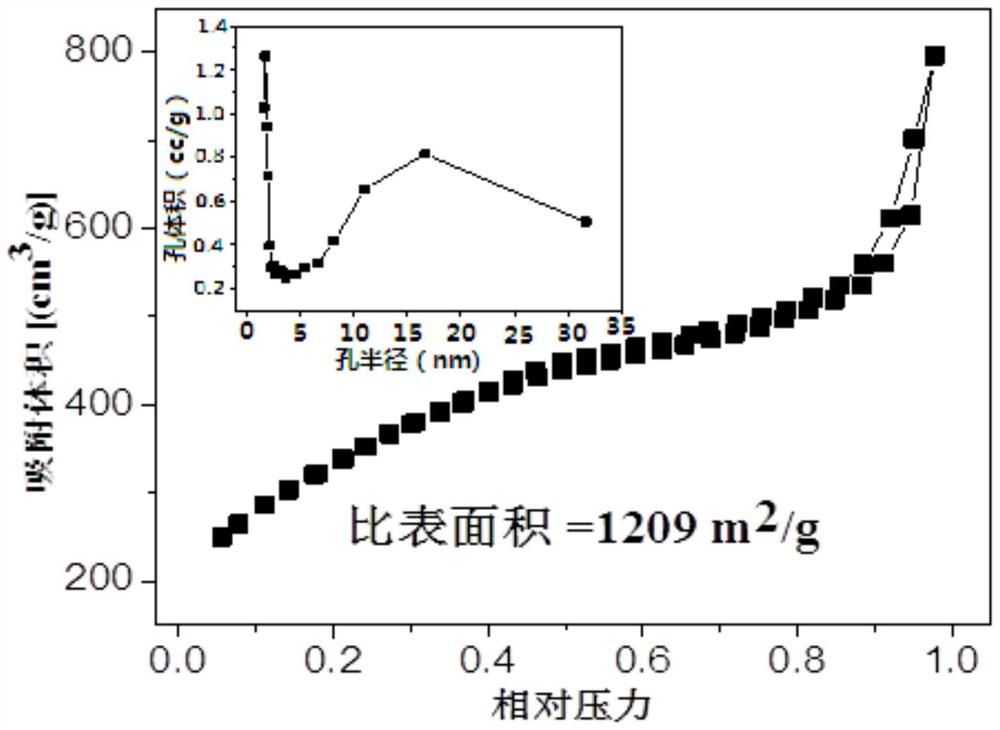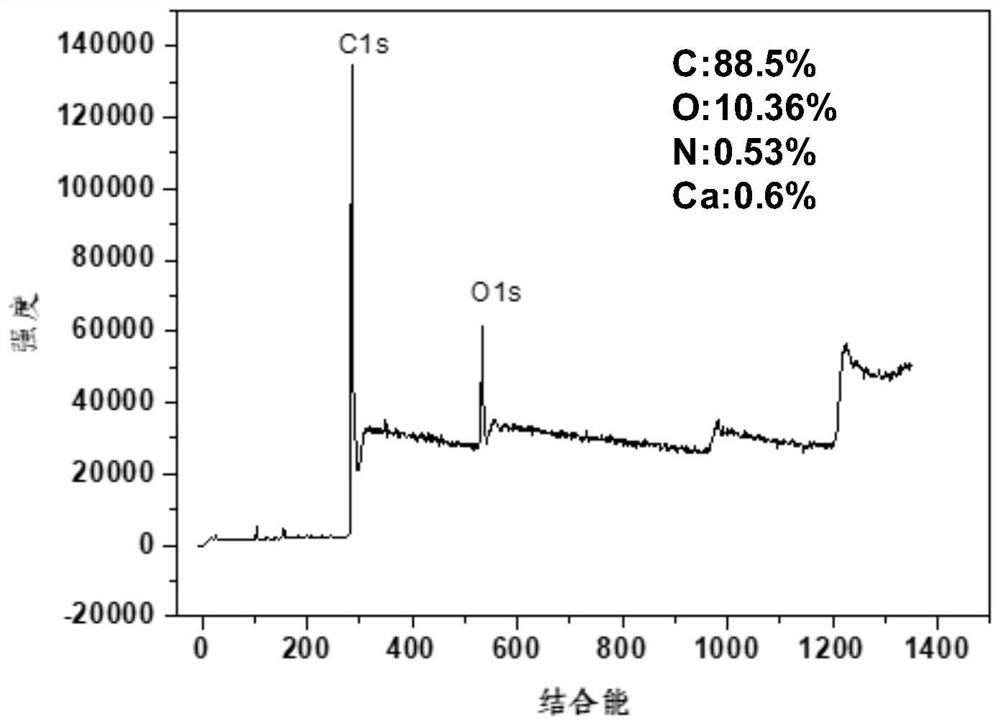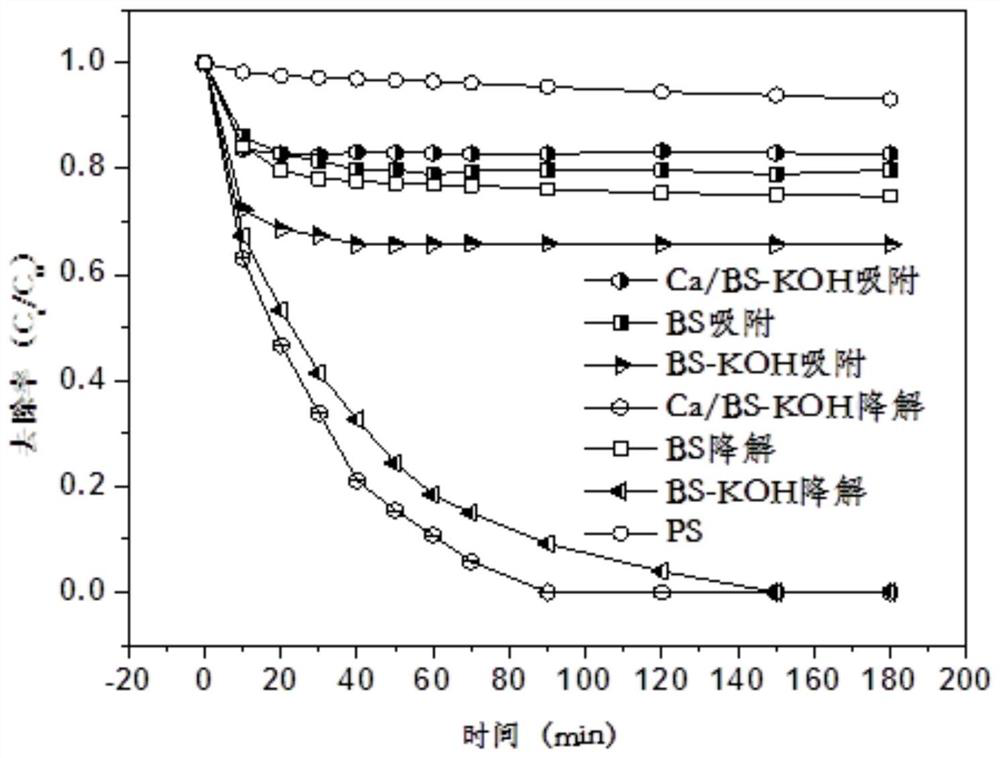Method for degrading organic pollutants by activating persulfate with multistage mesoporous biochar material
A technology of organic pollutants and persulfate, which is applied in the restoration of water pollutants, polluted soil, and water/sewage treatment, etc. It can solve the problems of unsatisfactory material cycle performance, metal infiltration pH range, and low catalytic efficiency. , to achieve the effect of rich oxygen doping content, fast and efficient adsorption, and improved adsorption and catalytic performance
- Summary
- Abstract
- Description
- Claims
- Application Information
AI Technical Summary
Problems solved by technology
Method used
Image
Examples
Embodiment 1
[0037] A method for activating persulfate to degrade organic pollutants using a multi-level mesoporous biochar material, specifically: using a multi-level mesoporous biochar material to activate sodium persulfate to degrade phenol in water, comprising the following steps:
[0038] According to the mass concentration ratio of the multi-level mesoporous biochar material and the phenol in the phenol solution is 3.3:1 (that is, the ratio of the mass concentration of the multi-level mesoporous biochar and phenol in the reaction system, such as the multi-level mesoporous biochar material in the system The initial mass concentration of phenol is 3.3mg / L, so the initial mass concentration of phenol in the system is 1mg / L) and the mass concentration ratio of phenol in sodium persulfate and phenol solution is 50: 1 (that is, sodium persulfate and phenol in the reaction system The ratio of the mass concentration, such as the initial mass concentration of sodium persulfate in the system is...
Embodiment 2
[0066] A method for activating persulfate to degrade organic pollutants using a multi-level mesoporous biochar material, specifically: using a multi-level mesoporous biochar material to activate sodium persulfate to degrade phenol in water, comprising the following steps:
[0067] According to the mass concentration ratio of multi-level mesoporous biochar material and phenol in phenol solution is 3.3:1 and the mass concentration ratio of sodium persulfate and phenol in phenol solution is 50:1, the multi-level media prepared in Example 1 The porous biochar material (Ca / BS-KOH) and sodium persulfate were added to the phenol solution (the The solution contains 0.6 mg of phenol), and the degradation treatment was carried out at 200 rpm for 180 minutes. During the treatment process, the adsorption and oxidation degradation were carried out simultaneously, and the degradation of phenol was completed. The degradation effects corresponding to 25°C, 30°C, and 35°C are as follows: Fig...
Embodiment 3
[0073] Investigate the anti-interference ability when using multi-level mesoporous biochar material to activate sodium persulfate to degrade phenol in water, including the following steps:
[0074] According to the concentration ratio of phenol in the multilevel mesoporous biochar material and the phenol solution is 3.3: 1 and according to the concentration ratio of the phenol in the persulfate and the phenol solution is 50: 1, the multilevel mesoporous material prepared in embodiment 1 Biochar materials (Ca / BS-KOH) and sodium persulfate were added to natural water bodies containing a variety of organic matter (four sampling points in the Xiangjiang River water body, and the corresponding degradation effects of these four water samples were as follows: Figure 7 "Water sample 1", "Water sample 2", "Water sample 3", "Water sample 4" curves) and soil samples (Xiangjiang wetland soil, a total of 3 soil samples, their corresponding degradation effects are as follows Figure 7 "m(wat...
PUM
| Property | Measurement | Unit |
|---|---|---|
| pore size | aaaaa | aaaaa |
| clearance rate | aaaaa | aaaaa |
Abstract
Description
Claims
Application Information
 Login to View More
Login to View More - R&D
- Intellectual Property
- Life Sciences
- Materials
- Tech Scout
- Unparalleled Data Quality
- Higher Quality Content
- 60% Fewer Hallucinations
Browse by: Latest US Patents, China's latest patents, Technical Efficacy Thesaurus, Application Domain, Technology Topic, Popular Technical Reports.
© 2025 PatSnap. All rights reserved.Legal|Privacy policy|Modern Slavery Act Transparency Statement|Sitemap|About US| Contact US: help@patsnap.com



